Editor’s note: Welcome to our monthly series, Driving the Greats. Your chaperone, David Lillywhite, Editor of acclaimed Magneto magazine, will be putting you in the driver’s seat of some of the most memorable cars of all time. Buckle up and enjoy. James Mills
So many fast Fords to choose from. So many fast Escorts to choose from, in fact. So why the Mexico? And why the Mk1 Mex’ and not the Mk2? The answer is simplicity.

There are very few cars that make such good use of the most basic mechanicals as a Mk1 Escort Mexico. Don’t try and claim the equally brilliant Mini Cooper does the same, because that’s got its tricksy transmission in the engine sump, pesky front and rear subframes and, in some cases, Hydrolastic suspension.
The Escort, meanwhile, has a spec that was absolutely the norm throughout the 1960s and ‘70s. Simple four-cylinder overhead valve engine. Four-speed direct change gearbox. Rear-wheel drive. MacPherson strut front suspension, which Ford had first used on the 1951 Consul. Live rear axle on leaf springs. Disc brakes at the front, drums at the rear – and yes, admittedly the discs were comparatively exotic but hardly unusual. Rack and pinion steering, which was a big move forward for Ford, making both Escort and Capri so much better to drive than their predecessors.
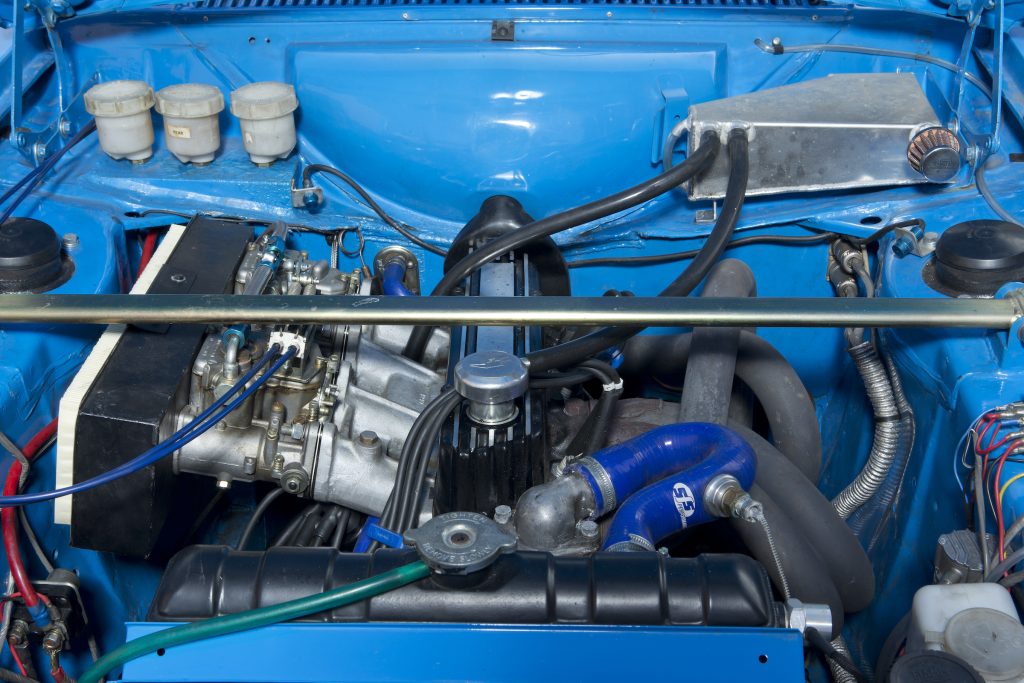
From this utterly uninspiring specification comes pure magic. The Mexico isn’t fast by today’s standards (0-60mph in 10.7sec, 99mph top speed), or even by the standards of the day when it was introduced in November 1970, but what it has is perfect balance and directness.
Throw a Mex into a corner and it will do exactly what you expect it to do; which is to roll a little and screech its skinny tyres in the dry, let go at the back end in the wet – and always in the most predictable way you can imagine, with perfect feel through the unassisted steering. Brake hard and it will pull up straight and without drama. Pull away with a footfull of throttle and it will chirrup the rear wheels but its extra (over the base spec) radius arms will at least prevent axle tramp. Change gear and you’ll almost feel the cogs meshing through the lever, such is the precision of the gearbox. It feels light, sporty and fun from the offset.
How does such a common-or-garden set-up feel this good? The secret is in what had gone before. Keen to compete in – and dominate – Group 2 international rallying, Ford revealed the Escort Twin Cam in January 1968, just weeks after the launch of the base-spec Escort. It was based around a stronger version of the two-door Escort bodyshell known as the Type 49, with slightly flared front arches, stronger suspension strut tops, various strengthening plates around the chassis and engine bay, and radius arms to reduce rear axle tramp. The engine was the Lotus-developed eight-valve DOHC unit based on the pre-crossflow Ford four-cylinder and used in the Elan and the Lotus Cortina.
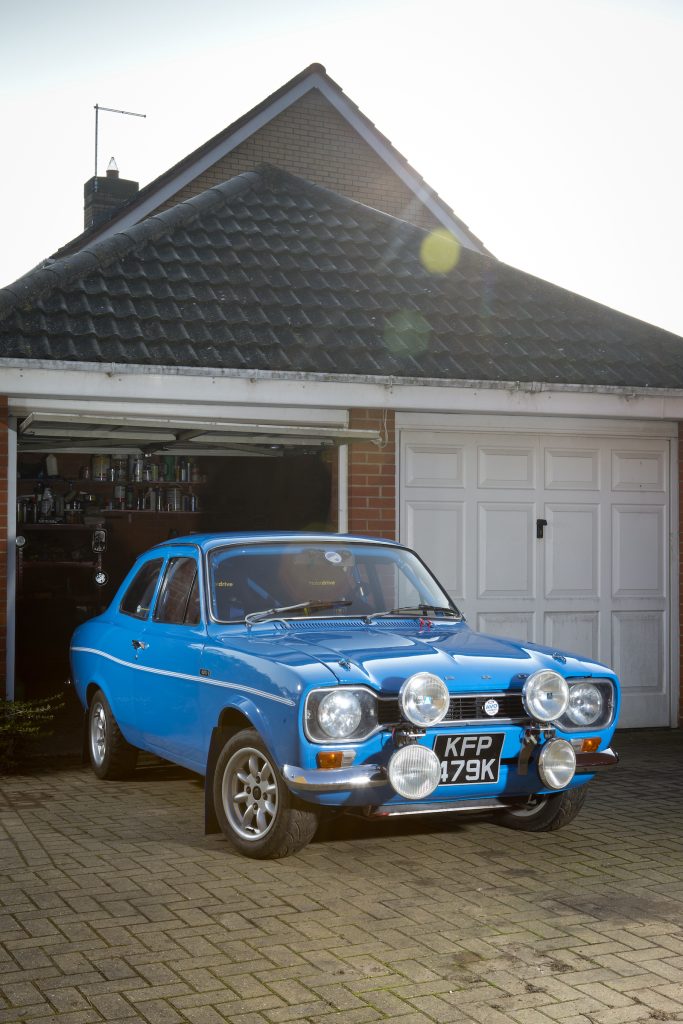
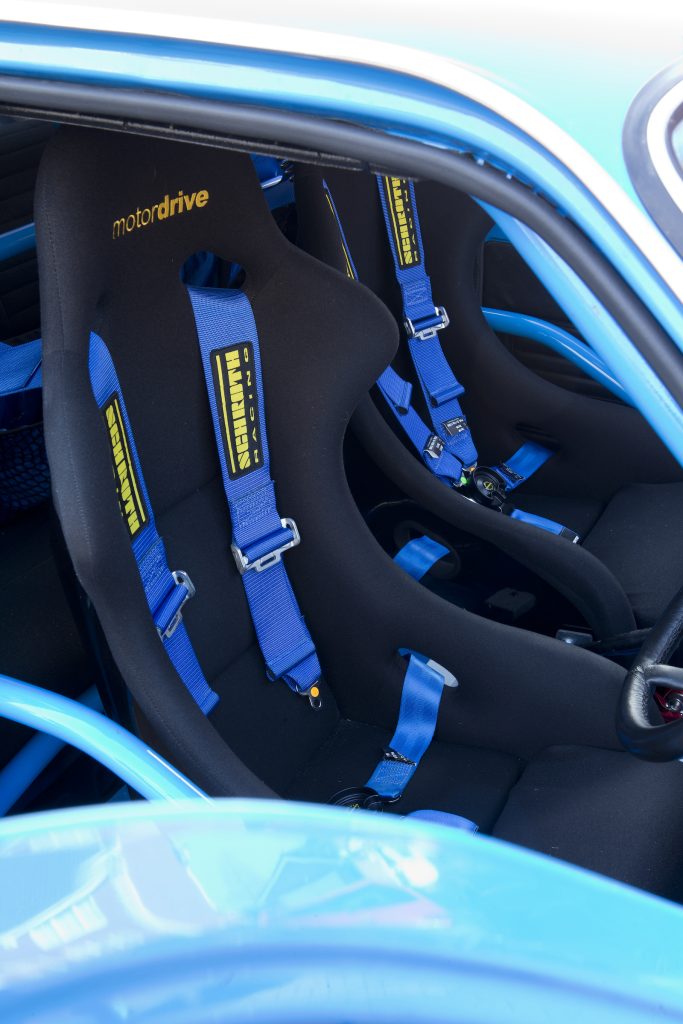
The Twin Cam took the Escort’s first victories in both rallying and saloon car racing, but it was soon replaced with the RS1600 – essentially the same car but with the stronger, more powerful Cosworth BDA (Belt Drive A Series) engine in place of the Lotus unit. The Escort went on to dominate rallying, and famously won the 1970 London to Mexico World Cup Rally, driven by Finland’s Hannu Mikkola and Swedish co-driver Gunnar Palm. [We should also mention the Escort’s eight back-to-back RAC Rally victories. Ed]
It was that victory which prompted a more everyman version of the high-maintenance RS1600: the Escort Mexico. In place of the RS1600’s Cosworth engine was the much simpler 1601cc version of the crossflow ‘Kent’ engine that lesser Escorts used in 1100 and 1300 versions.
The rest of the Mexico wasn’t that different from the RS1600’s in specification. It had the Type 49 bodyshell, the tough 2000E gearbox, the disc brakes, even the much-loved six-dial instrument cluster. It was a step above the sporty 1300GT and ‘luxury’ 1300E; it was the Escort for serious drivers and clubman motor sport competitors. What gave it serious credibility was that it was developed and produced by Ford’s AVO (Advanced Vehicle Operations) in Aveley, Essex, where the RS1600 was built (as were the majority of the later Mk1 RS2000s).
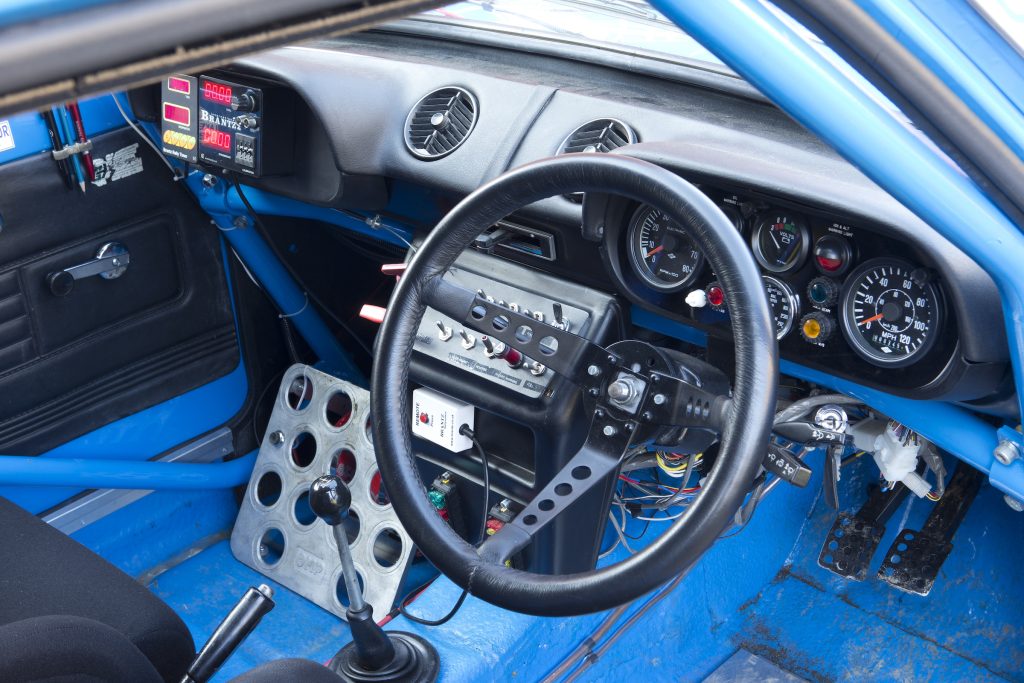
By that point, the RS1600’s success had spawned a wealth of aftermarket tuning parts, along with official Ford Rallye Sport components, most of which were also suitable for the Mexico. But even in standard form, the Mexico was just fun.
It’s basic in the extreme by modern standards, and wasn’t exactly luxurious even in its day. Now, it’s a lottery as to what you’ll find in a Mexico… the original seats in all-black vinyl or black cloth and vinyl, aftermarket seats, period rally seats, who knows? Original period Ford Rallye Sport options are best. Steering wheel? If you’re lucky, a deep-dish Springalex or later flat RS item.
The six dial instrument cluster, fascia and doors tops might have been treated to wood trims either from new or at some point over the last five decades; if not then the dials will likely have a cheap vinyl surround, the dash a matt black painted finish and the door tops will be finished in body colour. Original and most basic looks best – the wood trims look especially incongruous.
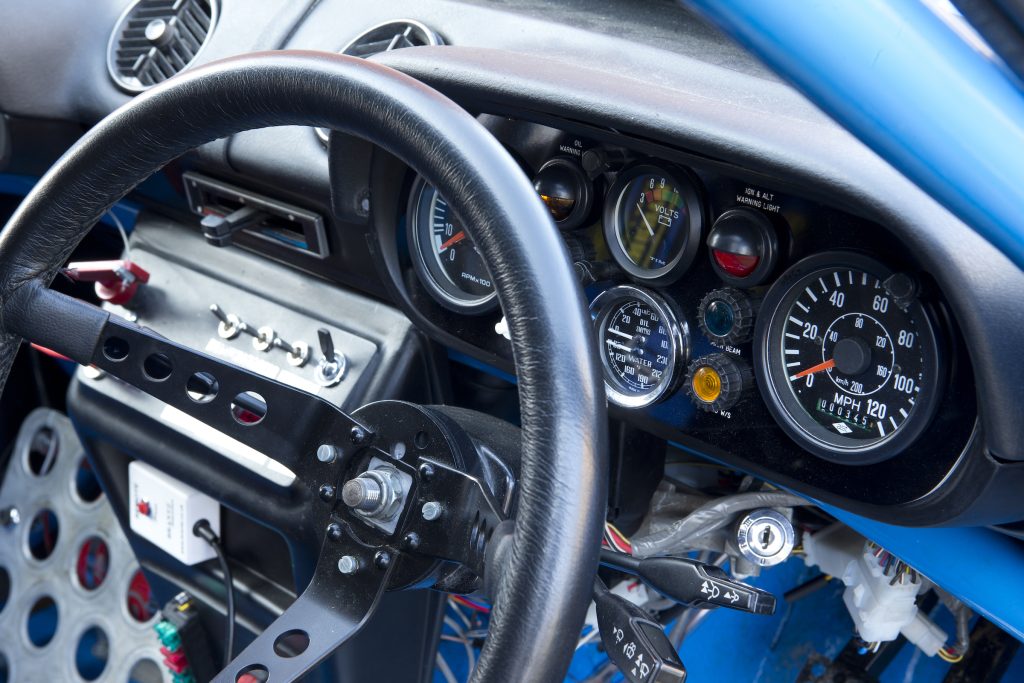
It’s the same for the engine spec. A standard engine starts with a little bark from the exhaust but there’s little else to raise the heart rate. The stock downdraught twin-choke Weber opens its small barrel first, making for smooth idling and glitch-free getaways; then as the accelerator pedal is pushed more than halfway down the second, larger barrel opens, induction noise increases noticeably with a deep roar and suddenly progress becomes more rapid. It’s a wonderful feeling familiar to anyone with a hot engine running a progressive action Weber.
But it’s just as likely that the downdraught carb has been replaced with a sidedraught Weber or Dell’orto, or maybe two of them. Then the soundtrack is all induction bellow and engine response is likely to be weaker low down but more impressive at higher revs, as long as cylinder head porting, camshaft and exhaust have been upgraded to suit. Modern throttle bodies have the same effect but without the glitches, which has made them a popular choice on fast Fords.
None of this sounds especially inspiring so far does it? But the point is that all these elements come together so perfectly in a Mexico that when you’re sat in the driver’s seat, it all feels completely natural, as if this is the way all cars should have been.
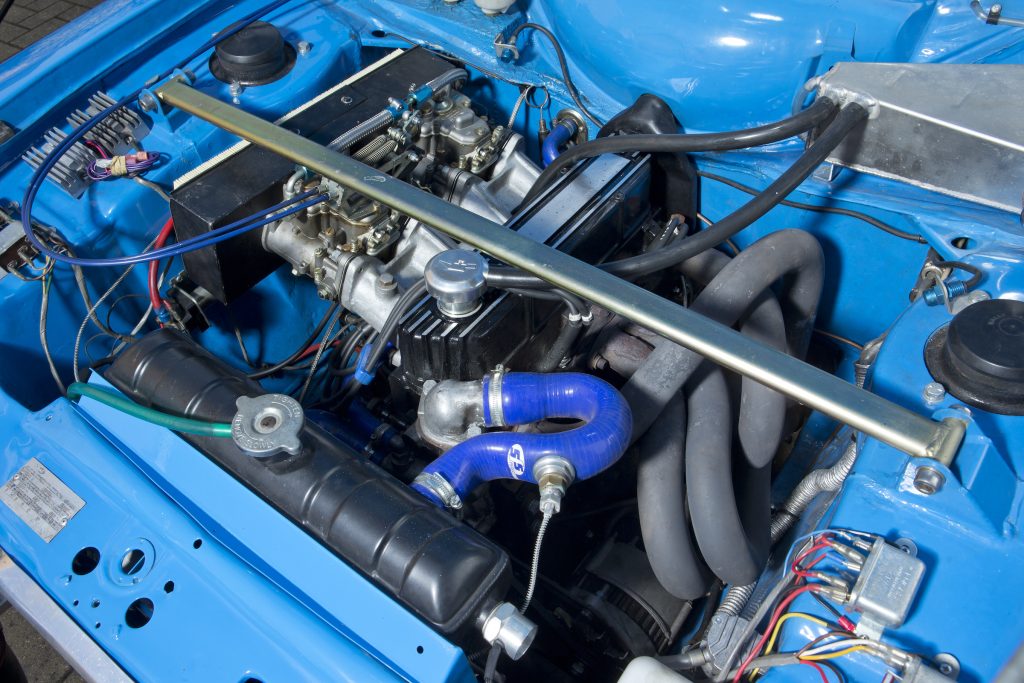
The controls are light, the driving position spot on, the visibility good, and before you know it you’re revving that humble engine to within an inch of its life but it’s loving it all the same, and the rorty exhaust and roaring induction are combining to drown out any valvetrain clatter. You’re slicing up and down the gearbox, working at the steering wheel through the twists and turns of your favourite B-road, unphased by the bumps that are throwing the rear wheels off the line occasionally and… well in your head you’re a rally driver, and a pretty good one at that.
The Mexico isn’t fast enough to feel daunting, and isn’t sophisticated enough to make you wonder whether it’s you that’s controlling the car or vice versa. It’s a car to learn and enjoy, and it’s a piece of history, based around and inspired by one of the greatest rally cars of all time.
Check out the Hagerty Media homepage for daily news, features, interviews and buying guides, or better still, bookmark it.










Back in the early 80s a mate of mine had an 1100 mk1 Escort. One Saturday morning we removed a 1600 engine from mk1 capri at our local friendly scrapyard. By Saturday teatime between us the ‘ transplant” was complete. Wow what a difference! The combination of 1100 back axle and 1600 engine made for fantastic acceleration but a screaming top speed of 80 ish mph. Then their was the brakes, drums all round made for too many hair raising moments ( ii had hair to raise back then) these were soon swapped for a set of Escort 1300 GT struts and discs .Apart from an appetite for gearboxes again a 1300 GT one solved the problem.The car was run for many happy years in this form.Good days and simpler times.
I’m trying to trace an ex colleague whom was an active rally driver back in the early 70’s. His name was George Fowler and his co driver was his wife Lesley, their car was a Escort Mexico hence my message. I know they used to rally on a regular basis and belonged to a local rally club. It would be really great if you could help with this as there are only 3 of us left when we worked together in the paper industry. Many Thanks
I’m constantly surprised why some spend so much on basically crude old junk when so much better vehicles could be bought for less. The great Warm Fraud delusion. Amazing